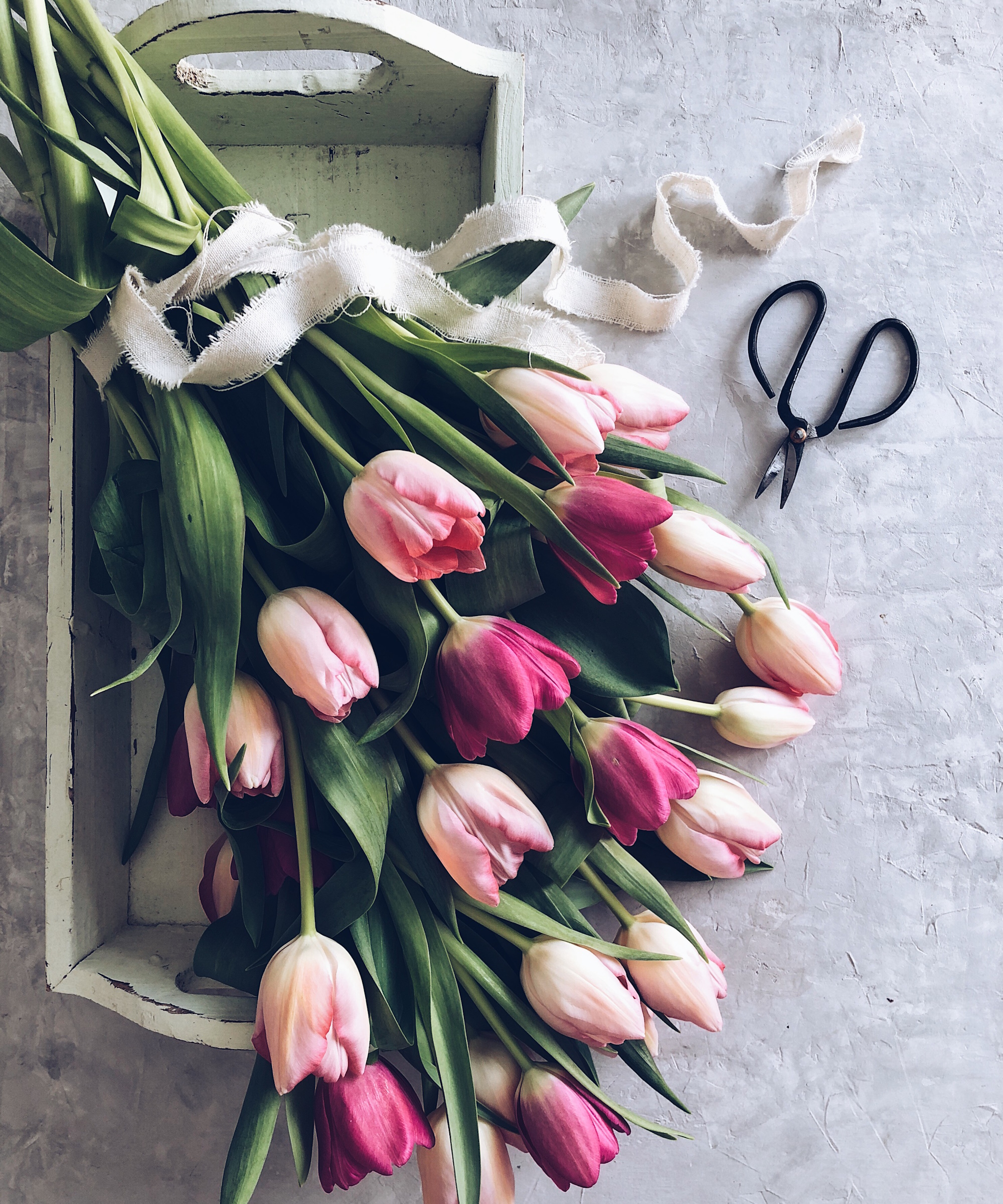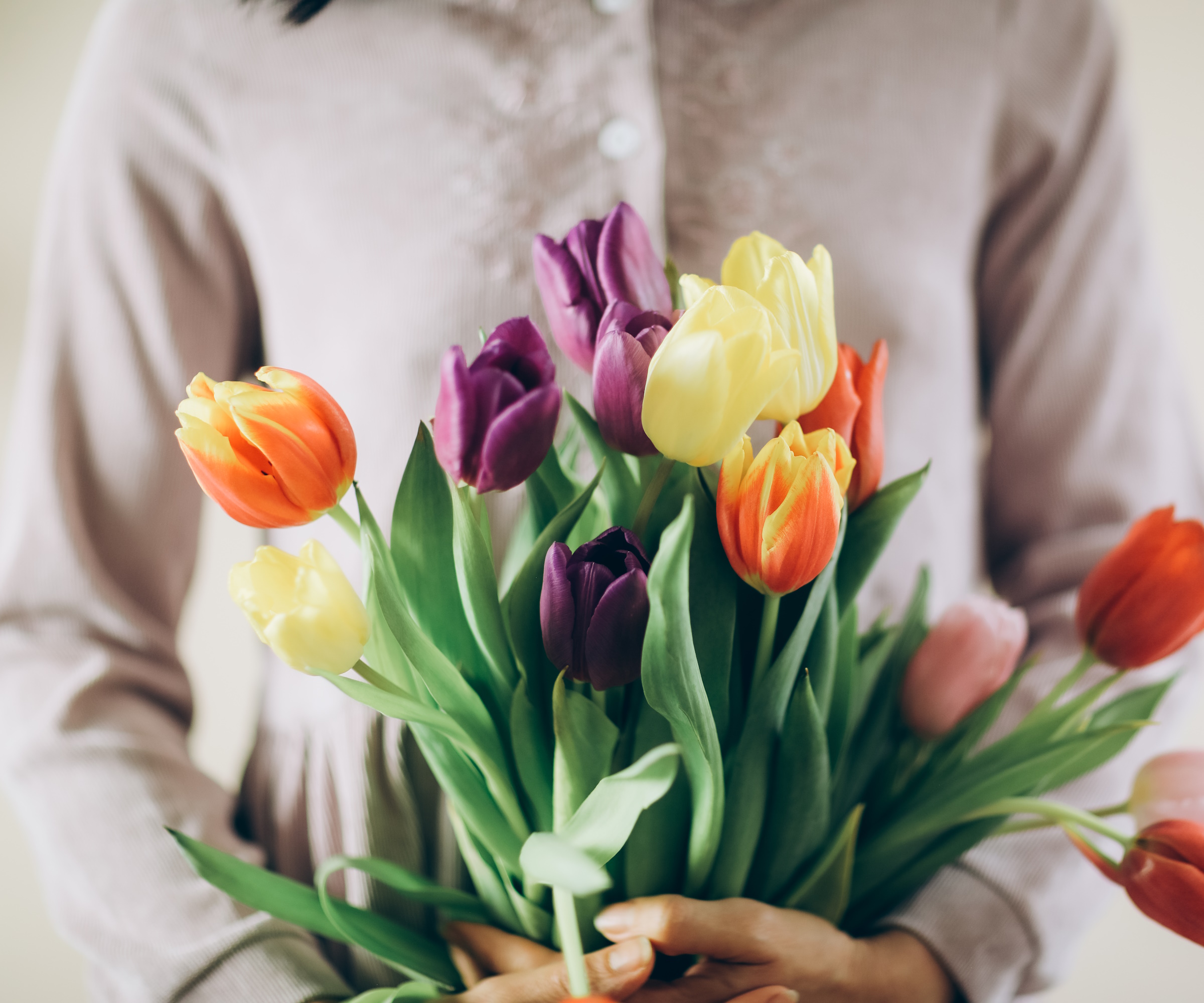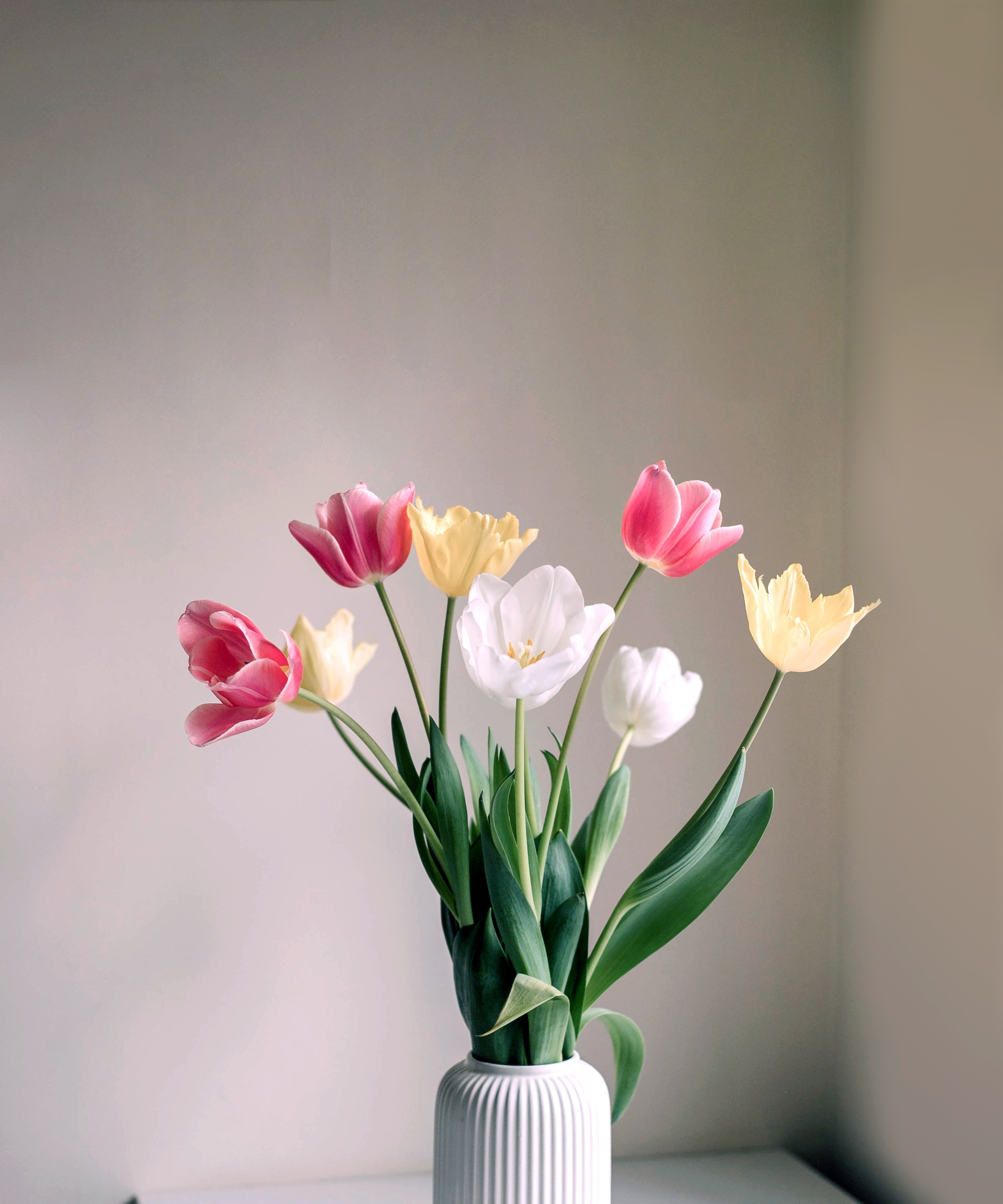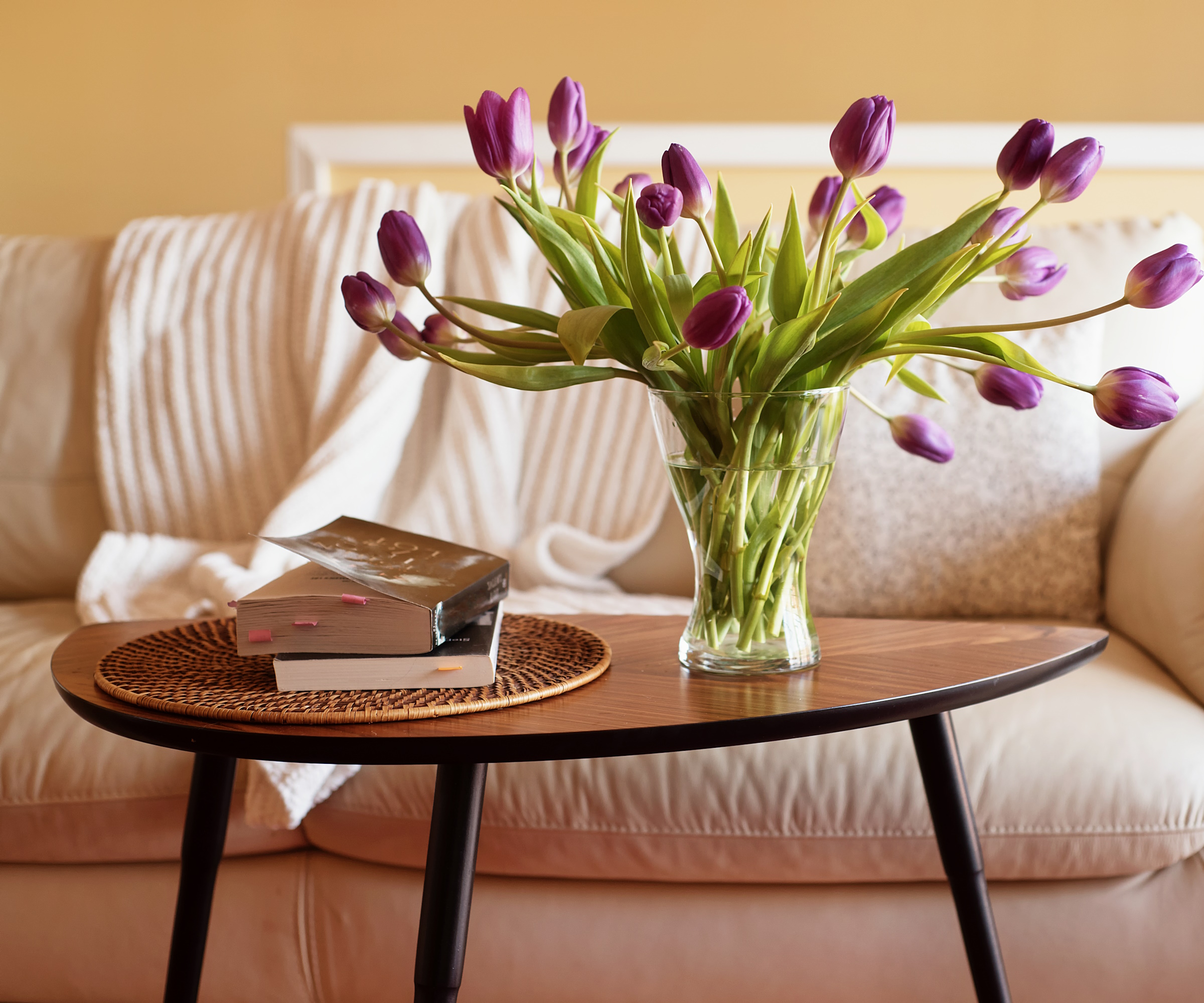How to care for tulips in a vase – and prevent them from drooping
Our expert florist shares the dos and don'ts to perfectly poised tulips, and explains how to style them like a pro


When it comes to cut flowers, I genuinely believe tulips fly under the radar. They don't have the natural romance and heady scent associated with garden roses, and they lack the fleeting fandom usually saved for peony season. And yet an unassuming bunch of subtly elegant tulip blooms brings so much joy and heralds spring for many of us.
There are more than 3,000 registered varieties of tulip bulbs, and within them 15 groups, including fringed, parrot, Darwin, and triumph. Some, too, are scented. Last year in my cutting patch I grew 'Verona' and 'Apricot Beauty' varieties, which have a subtle lemon and sweet honey fragrance, respectively. Plus, tulips symbolize love.
Ok, have I persuaded you to go out and buy a bunch of tulips this weekend? If so, you will certainly want to know how best to keep them fresh in a vase. Because for all they give, tulips are also renowned for drooping. You know, when you bring home a beautiful paper-wrapped bouquet, place the stems in a vase and they almost immediately splay to the sides and dramatically flop over as if it's all too much for them? Sound familiar?
Fret no more. In my years as a professional floral designer, I learnt exactly how to care for tulips in a vase and prevent them from drooping, to ensure they last as long as possible. Here I share all my top tips.

How to care for cut tulips in a vase
Follow my expert steps and learn a few styling tricks along the way for upright, long lasting tulip displays in your home.
A step-by-step guide to preventing tulips from drooping

Condition: When you get any cut flowers home, the most important first step is to condition them. For tulips, take them out of their wrapping and lay them out flat. Then remove all of the green leafy foliage that would be below the water level in a vase. You don't want any foliage below the level of the water, and this will promote bacteria and cause your flowers to fade more quickly. Tulip leaves can sometimes tear when you try to pull them off. My advice if this starts to happen is to carefully trim them off with scissors, so you avoid risking any damage or weakening to the stems from tearing - and it will look a bit neater.
Rehydrate: Your cut tulips will have been out of water for a few hours by the time you get them home, and they will be thirsty. Before you try to arrange them, you need to snip the stem ends, then let them sit tightly in a large vase full of water for at least four hours to have a good, long drink. You can even keep them wrapped when doing this if you want to give them some added support. This is all part of the conditioning process. In doing this, they will be taking water up their stems and into the flower heads, resulting in more turgid stems. The reason they droop is because tulips have hollow stems, so if there isn't sufficient water inside to keep them upright, they will flop.
Prepare your vase: Once you've decided your ideal vase for your tulips, first make sure it is completely clean. Give it a really good wash with dishwashing soap and rinse with cold water to ensure no dirt or bacteria is left from the previous time it was used. Then fill with clean water.
Cut the stem ends: After your tulips have had a few hours to sit and drink, they'll be ready to arrange. Take them out of their interim vase, and cut half an inch off each stem on the diagonal. This, again, encourages maximum water uptake and will keep your tulips standing straight.
Change the water every two days: If you're wondering how often to change the water in your vase of flowers, the answer is ideally every two days. This will prevent any bacteria building up in the water, and will keep your tulips looking as fresh as possible. If after a few days you notice any of the stems drooping, remove them from the vase, change the water and re-cut these stems.
How to choose the right vase for your tulips

Sometimes, even when you have followed all the above steps, it can still be tricky to get your tulips to stand tall. This is down to your chosen vase or vessel.
For tulips, I would always opt for a vase which has either a tapered or a narrow neck, in order to fully support your stems and prevent them from splaying out to the sides. This Raawii Strom large earthenware vase from Net-a-Porter would be ideal.
How to style cut tulips

Here is a fun fact about tulips: they are phototrophic, meaning they will continue to grow in the vase towards the sunlight. This is yet another a brilliant feature of these cut flowers, which you can use to your advantage to create some delightfully curved shapes and movement as your tulips mature.
Simply position your vase near a window (but not in direct sunlight as your tulips won't like this), and rotate it to encourage the stems closest to the light to grow and curve outwards.
And then embrace how the stems grow, move and change until they eventually wilt. Each stage of a cut tulip is glorious, even when the petals begin to splay outwards and fall, revealing the colors on the inside and the stamen. There is so much beauty to be enjoyed and embraced, even as your stems fade.
FAQs
Should I keep my tulips in a dark room?
As a florist, I would sometimes keep cut flowers in the dark if I was trying to prevent them from opening too quickly. However, you're buying tulips to enjoy them at home, so my advice would be not to keep them in the dark. Put them where you want to see and enjoy them. Just make sure your vase is not in direct sunlight or next to a fruit bowl, to ensure the longevity of your cut stems.
If, like me, you also enjoy growing cut flowers to have in your home, you may be keen to learn when to plant tulips, and what to do with the bulbs in your backyard after they have bloomed.
Sign up to the Homes & Gardens newsletter
Design expertise in your inbox – from inspiring decorating ideas and beautiful celebrity homes to practical gardening advice and shopping round-ups.

Rachel is a gardening writer, flower grower and floral designer. Her writing career began on Country Living magazine, sparking a love of container gardening and wild planting. After more than a decade writing for and editing a range of consumer, business and special interest titles, Rachel became editor of floral art magazine The Flower Arranger. She then worked as a floral designer and stylist for six years, before joining Homes & Gardens. An expert in cut flowers, she is particularly interested in sustainable gardening methods and growing flowers and herbs for wellbeing. In summer 2024, she was invited to Singapore to learn about the nation state's ambitious plan to create a city in nature, discovering a world of tropical planting and visionary urban horticulture.
-
 These are the 6 must-have colors to decorate with in April 2025
These are the 6 must-have colors to decorate with in April 2025What do retro-inspired yellows and beautiful blues all have in common? They're on our hot list for the season ahead
By Sophia Pouget de St Victor Published
-
 Plants never to grow next to fruit trees
Plants never to grow next to fruit treesExpert advice on which plants to keep away from fruit trees to encourage a healthy harvest
By Jacky Parker Published